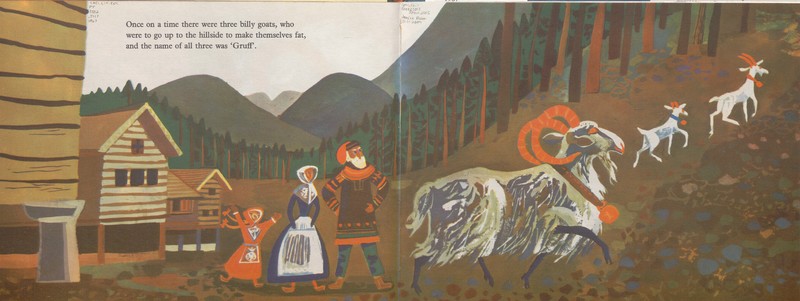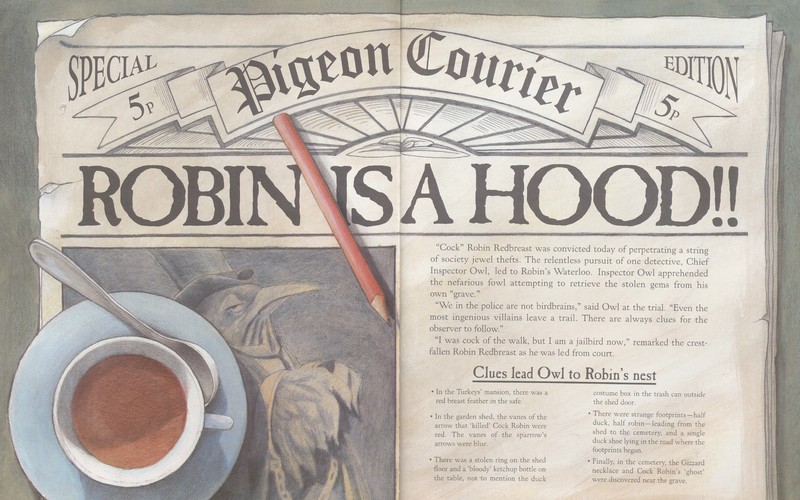The Death and Burial of Cock Robin
Taking the form of a series of questions and rhyming responses, the story tells of Cock Robin’s death and catalogs the rituals surrounding his burial.
The Death of Cock Robin (circa 1900)
Digitalis purpurea, a flowering plant native to temperate Europe, appears on the opening page of “Grandma Goodsoul’s Death of Cock-Robin. The following fictional herbarium label, written in standard botanical format. The data stand for elements of the rhyme’s socio-literary significance, explained in the footnotes:
PLANTÆ ANGLICUS
Buckland parish, Tewkesbury, Gloucestershire (1)
Digitalis purpurea L. Plantaginaceae
Growing in sandy-loam, alley of 10 Johnson’s Court, Fleet Street (2) near Robin lying dead w/small arrow poking from red breast, Passer domesticus (3), Osio otus (4), Corvus frugilegus (5) overhead. Association w/Convallaria majalis.
LEG: Mrs. G. Goodsoul (6) No: 1744 (7) Date: (8)
(1) Buckland County Rectory in Buckland village has a 15th century stained-glass window in which the murder of Cock-Robin by sparrow is depicted, giving perspective on the age of the central narrative in popular English consciousness.
(2) Street address of LONDON READS & CO., the publishing house that printed Grandma Goodsoul’s edition.
(3) House sparrow.
(4) Species of owl which appears on page 3.
(5) The genus-species name for the rook, who with his little book, performs the duties of parson, culturally encodes Protestant burial rites and literacy as a class designation.
(6) “Grandma Goodsoul” is READS & CO.’s archetypal fictive narrator.
(7) The date of Cock-Robin’s first recorded publication in Tommy Thumb’s Pretty Songbook.
(8) This edition does not exhibit a publisher’s date, nor is there a specific date of origin of the rhyme--though its scheme is similar to John Skelton’s Phyllyp Sparowe, written in 1508, and the rhyming of “owl” with “shovel” may be remnant of Older Middle English pronunciation, dating the rhyme to between the 12th and 15th centuries.
Who Killed Cock Robin? (1993). Kevin O’Malley (author and illustrator)
This illustration depicts a bird’s eye view of a newspaper on a detective’s desk. A teacup, saucer, and spoon rest on top of the newspaper. The headline: “Robin Is A Hood!” The accompanying text reveals Cock Robin faked his own death in order to get away with theft. Clues leading to Cock Robin’s guilt are listed for the child to follow. A haughty Cock Robin in Victorian garb glares out from the front page.
Drawing upon America’s historical fascination with true crime, Kevin O’Malley inverts the “Death and Burial” narrative of the original Cock Robin text in order to present a much more sensational headline, Who Killed Cock Robin? This retelling is significant in that it eliminates the original text’s mourning narrative completely. Rather, Cock Robin– first presented to the reader as a notorious jewel thief– fakes his own death to escape a prison sentence (which is ultimately served). Through the Owl detective, Robin’s plot is eventually revealed, and clues at the end of the story encourage close reading.
The genre of murder mystery was first introduced to the Cock Robin narrative in 1935, when Disney’s Silly Symphonies produced the animated short, Who Killed Cock Robin? It was well-received among the American public– so much so that it was nominated for an Oscar. In the decades that followed, the rising popularity of the mystery genre in the American zeitgeist helped revitalize this traditional tale. In O’Malley’s 1993 edition, a combination of mystery and humor encourages modes of inquiry in early readers.
--Kelly Wester

Puss-in-Boots

The Three Billy Goats Gruff


